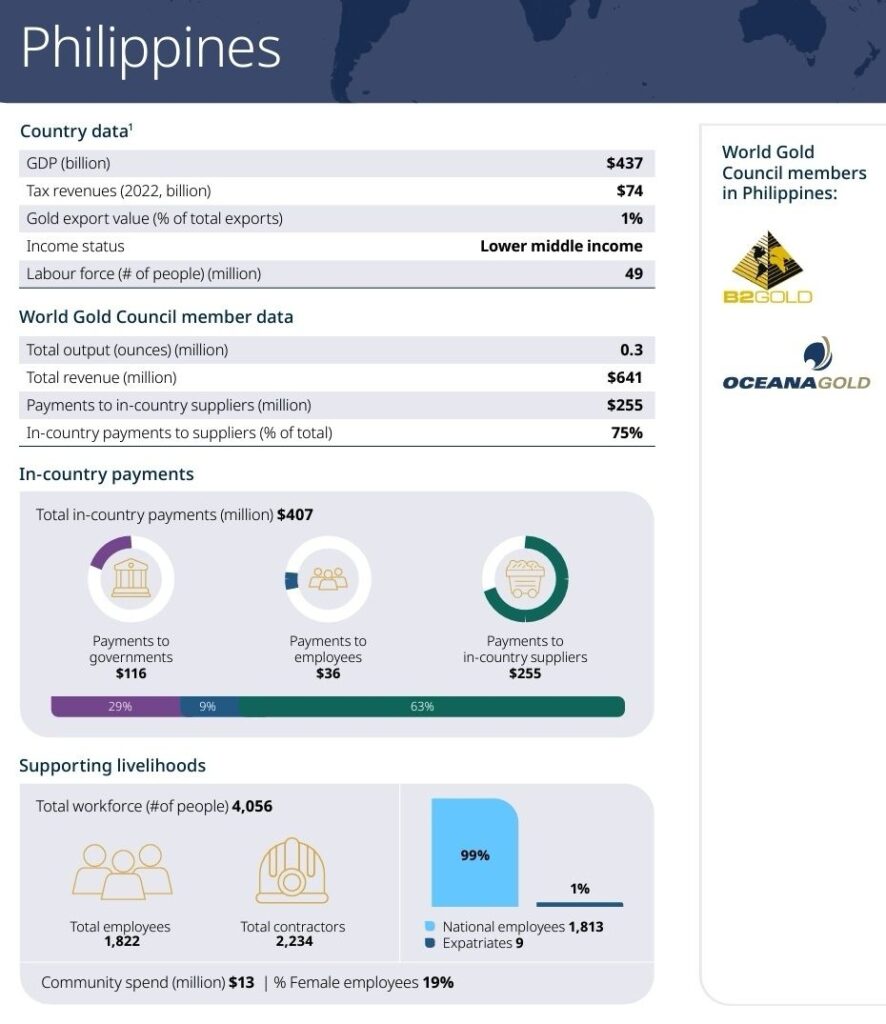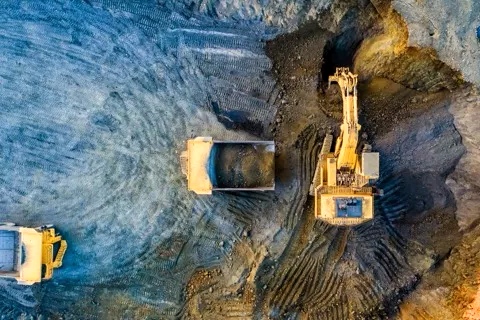Gold mining boosts Phl economy, contributes $407-M in 2023

Gold mining continues to be a significant economic contributor in the Philippines, with the industry injecting over $407 million into the national economy in 2023, according to the latest data from the World Gold Council (WGC).
The Philippines, a key player in global gold production and home to major WGC members like B2Gold and OceanaGold, saw substantial investments in infrastructure, job creation, and community development in 2023, underscoring the gold mining sector’s role in driving sustainable socio-economic growth.
In total, WGC member companies paid $116 million in taxes and royalties, $36 million in wages to employees, and $255 million to local suppliers. Additionally, they invested $13 million in community projects and Indigenous groups.
The gold mining workforce in the Philippines employed by WGC members totaled 4,056 individuals, with 99% of them sourced locally.
The Philippines’ gold exports, accounting for 1% of the nation’s total exports, are bolstered by operations at B2Gold’s Masbate Mine and OceanaGold’s Didipio Mine. The latter, a significant contributor to the country’s gold and copper production, has invested over $790 million in local communities since 2013, including building roads, schools, and healthcare facilities.
Both companies have focused on sustainable practices, such as improving biodiversity and supporting local education and healthcare. Didipio, for instance, has constructed a family health center and funded environmental initiatives like reforestation and watershed management, benefiting both the local ecosystem and surrounding communities.
Gold mining’s continued development in the Philippines highlights its vital role in advancing the country’s broader economic and social goals, aligning with the United Nations Sustainable Development Goals (SDGs) through job creation, infrastructure investment, and community well-being.



0 Comment